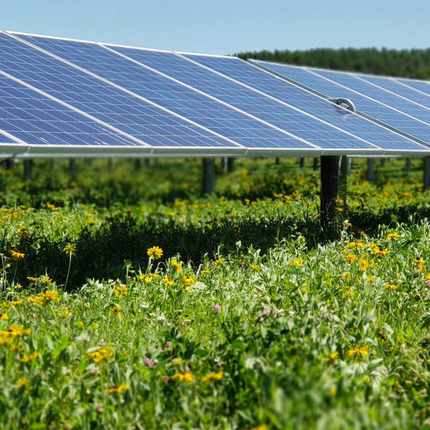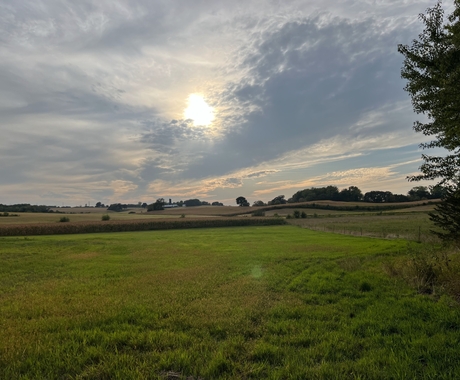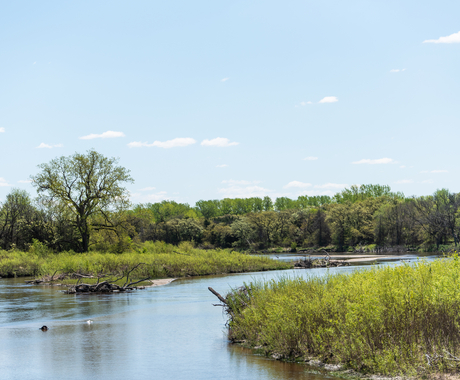Teresa Hoffman, policy communications associate, teresah@cfra.org, 402.687.2100 ext. 1012; or Rhea Landholm, brand marketing and communications manager, rheal@cfra.org, 402.687.2100 ext. 1025
NEVADA, IOWA - Populations of all pollinators, including honey bees, native bees, and monarch butterflies, could more than triple on solar project sites with investments in native vegetation, according to a new report from the Center for Rural Affairs.
Released today as part one of a series, “Amplifying Clean Energy with Conservation Part One: Pollinator-Friendly Solar” identifies opportunities for pollinator-friendly solar across the Midwest.
“The reality is that the solar energy industry is in the midst of a major boom across the Midwest,” said Cody Smith, policy associate at the Center for Rural Affairs and author of the report. “Over the past nine years, the price of installing solar energy projects has decreased by 70 percent and with this expansion comes an opportunity for the conservation of our shared natural resources.”
The report outlines steps solar project developers, utilities, and other stakeholders should take to plan for, install, and manage native vegetation on medium- to utility-scale solar sites. Steps for selecting native seed mixes and recommendations for constructing, designing, and budgeting for pollinator-friendly solar sites are also included in the publication.
“In addition to providing much-needed habitat for a variety of at-risk pollinators and wildlife, pollinator-friendly solar projects can cut operations and maintenance costs for project developers by three times when compared to traditional turfgrass management,” Smith said. “When solar developers adopt this commonsense practice, they’re amplifying the value of the clean energy they produce with investments in conservation while also cutting costs—ensuring the greatest possible return on investment for all stakeholders.”
Policy considerations for both public officials and private parties are also explored in the report, including requiring the practice within county-level renewable energy ordinances and the adoption of statewide initiatives.
Click here to read the report.
# # #
Feature photo courtesy of the Center for Pollinators in Energy





